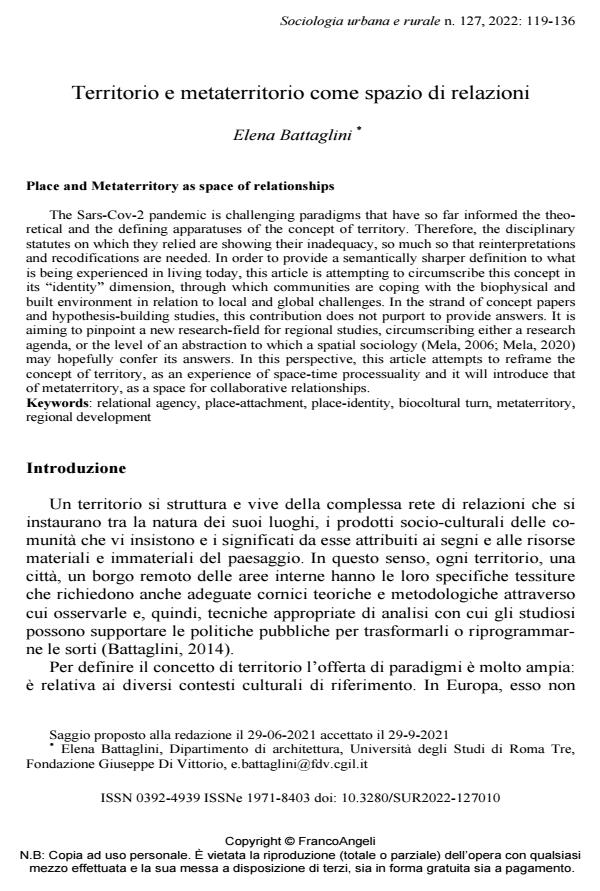Place and Metaterritory as space of relationships
Journal title SOCIOLOGIA URBANA E RURALE
Author/s Elena Battaglini
Publishing Year 2022 Issue 2022/127
Language Italian Pages 18 P. 119-136 File size 298 KB
DOI 10.3280/SUR2022-127010
DOI is like a bar code for intellectual property: to have more infomation
click here
Below, you can see the article first page
If you want to buy this article in PDF format, you can do it, following the instructions to buy download credits

FrancoAngeli is member of Publishers International Linking Association, Inc (PILA), a not-for-profit association which run the CrossRef service enabling links to and from online scholarly content.
The Sars-Cov-2 pandemic is challenging paradigms that have so far informed the theoreti-cal and the defining apparatuses of the concept of territory. Therefore, the disciplinary statutes on which they relied are showing their inadequacy, so much so that reinterpretations and re-codifications are needed. In order to provide a semantically sharper definition to what is being experienced in living today, this article is attempting to circumscribe this concept in its "identi-ty" dimension, through which communities are coping with the biophysical and built environ-ment in relation to local and global challenges. In the strand of concept papers and hypothesis-building studies, this contribution does not purport to provide answers. It is aiming to pinpoint a new research-field for regional studies, circumscribing either a research agenda, or the level of an abstraction to which a spatial sociology (Mela, 2006; Mela, 2020) may hopefully confer its answers. In this perspective, this article attempts to reframe the concept of territory, as an experience of space-time processuality and it will introduce that of metaterritory, as a space for collaborative relationships.
Keywords: relational agency, place-attachment, place-identity, biocoltural turn, metaterritory, regional development
Elena Battaglini, Territorio e metaterritorio come spazio di relazioni in "SOCIOLOGIA URBANA E RURALE" 127/2022, pp 119-136, DOI: 10.3280/SUR2022-127010